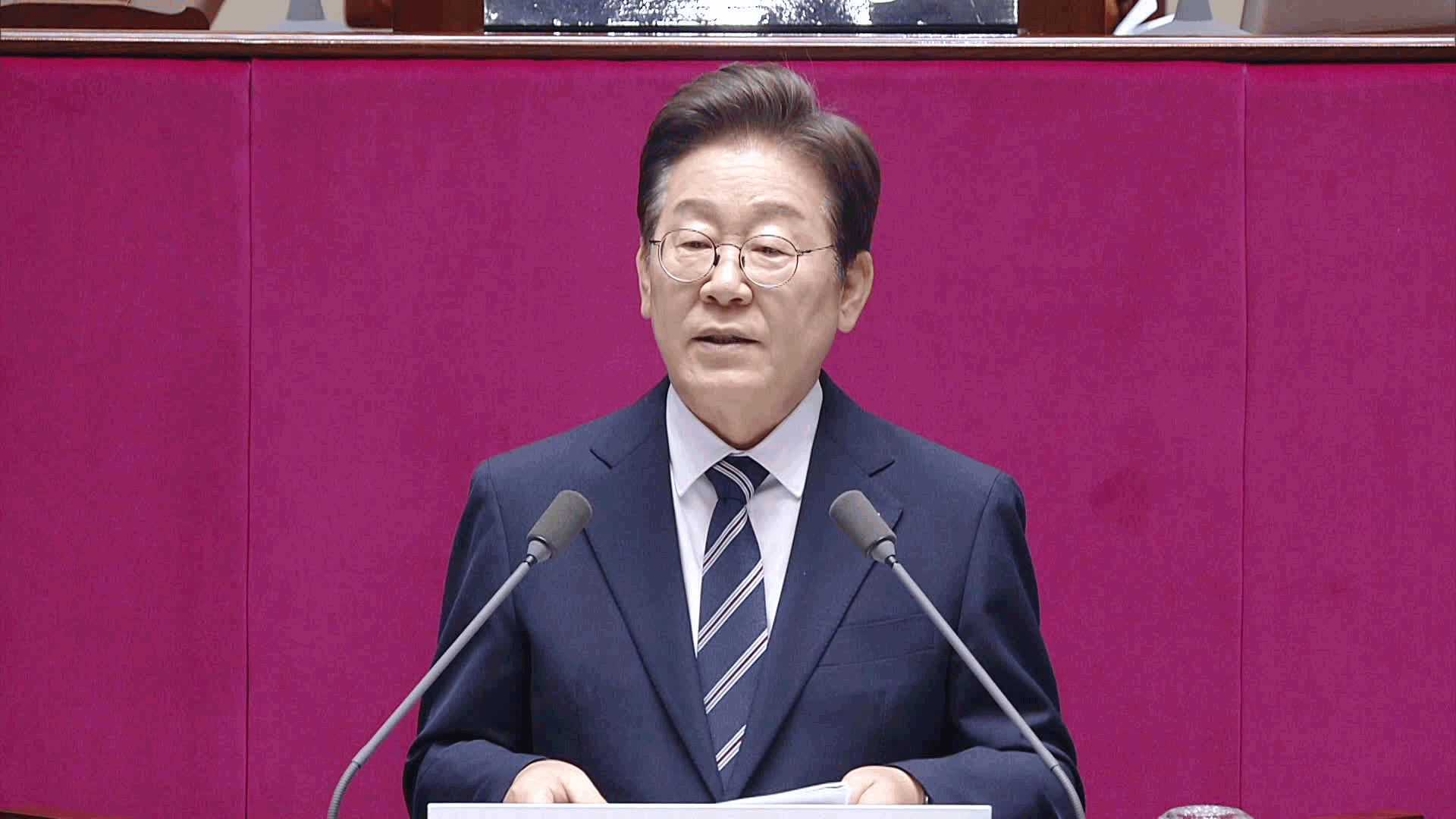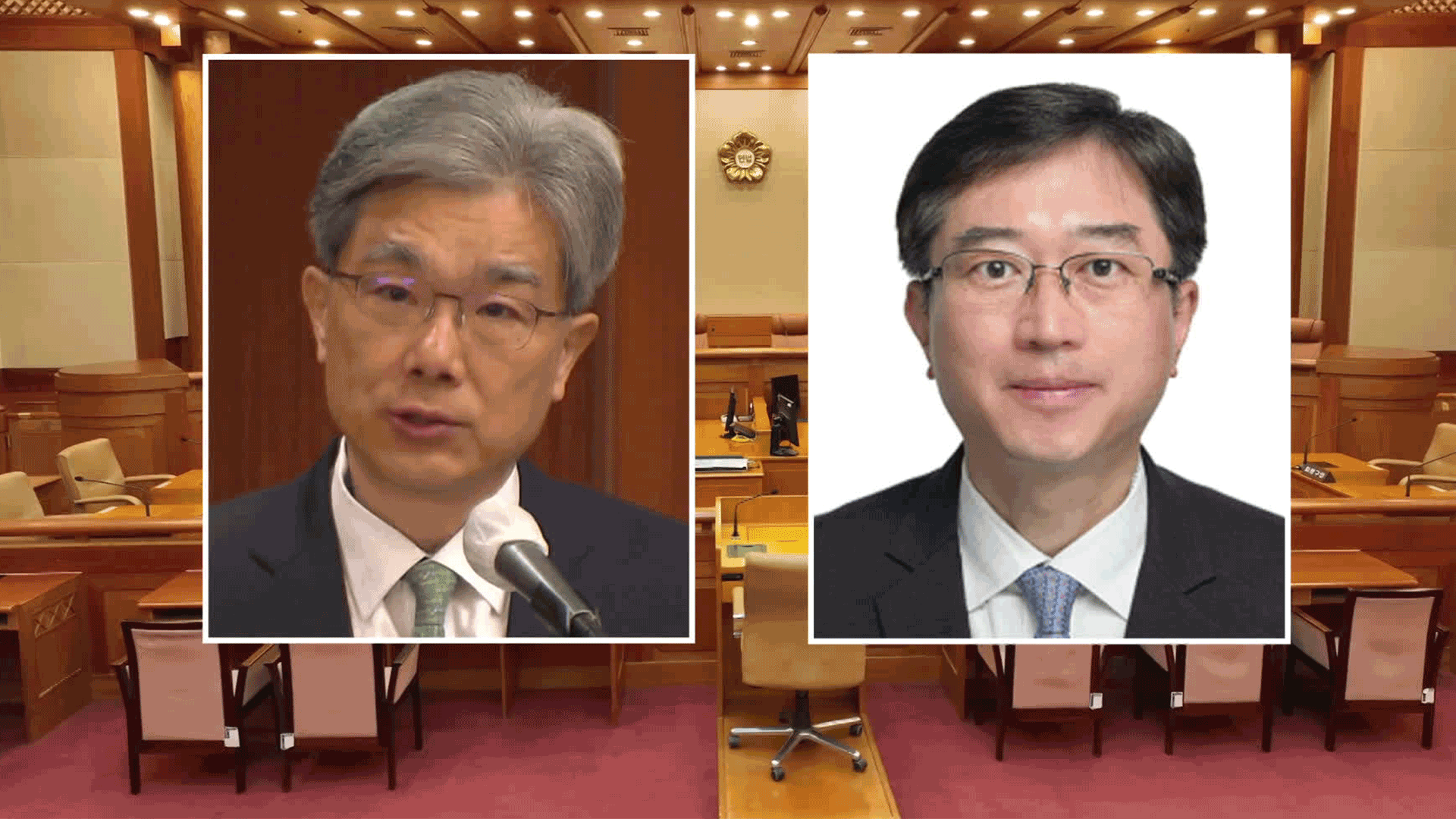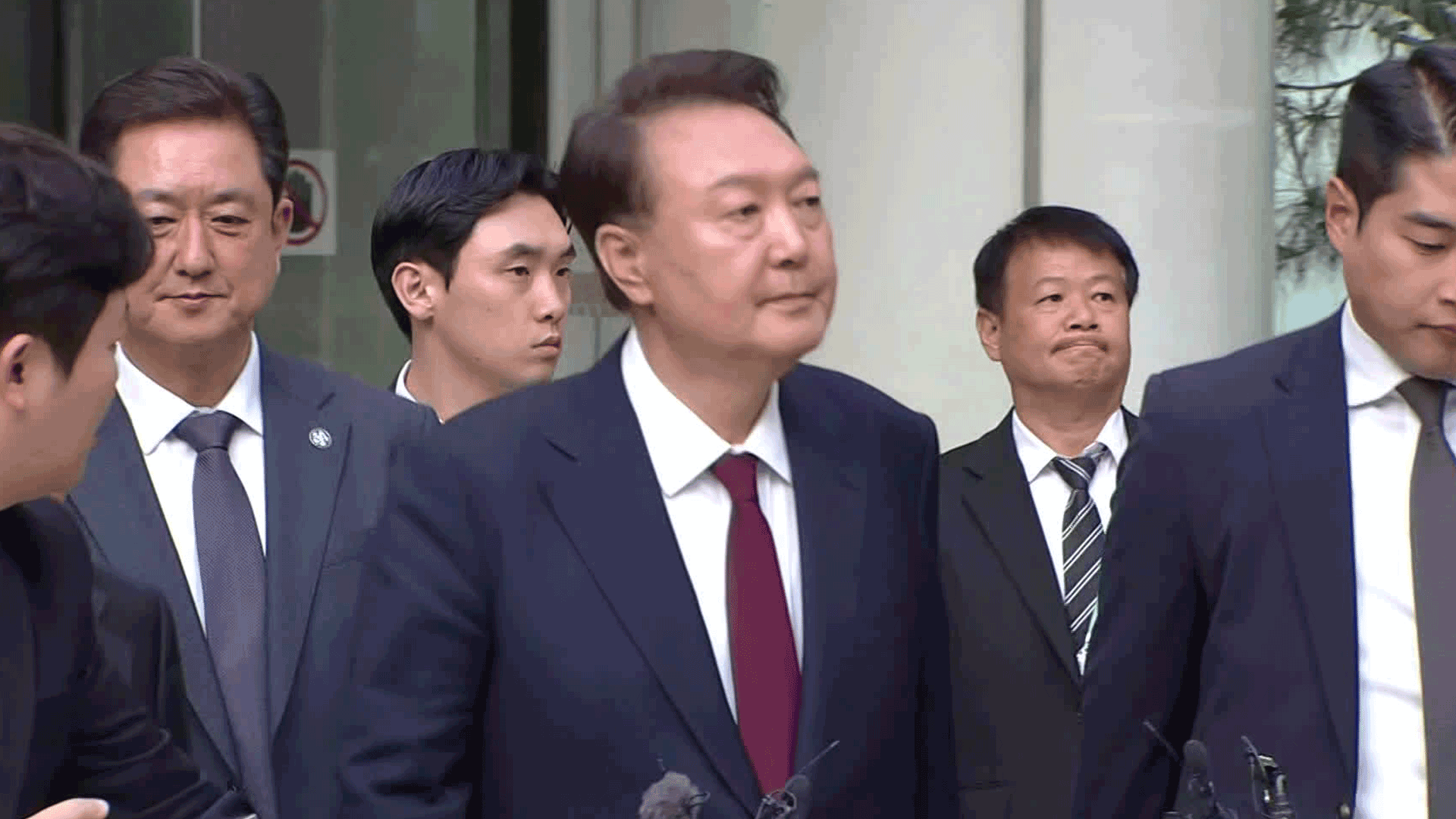[Anchor]
We continue our report on KBS's 'Ground Subsidence Safety Map.'
The government and local governments have pointed to the bursting of aging water and sewage pipes as the main cause of ground subsidence accidents.
However, an analysis of 110,000 underground data revealed that simply replacing old pipes is insufficient to prevent ground subsidence.
This is a report by Kim Woo-jun.
[Report]
A column of water, as high as a 4 to 5-story building, erupts in the middle of Seoul.
During construction, an excavator accidentally struck an underground water pipe, turning the road into a sea of water.
I am currently at the site in Hwajeong-dong, Seoul, where the water pipe burst.
According to data secured by KBS, Hwajeong-dong has the highest history of water and sewage pipe bursts.
However, the area does not rank in the top ten for ground subsidence accidents or related complaints.
Similarly, Myeonmok-dong in Jungnang-gu has a high history of water pipe bursts, but its subsidence accident history ranks 18th.
Local governments have long identified aging water and sewage pipes as a major cause of ground subsidence accidents.
They have stated that it is difficult to replace old water pipes due to budget constraints.
[Kim Seol-hee/Seoul City Hall Budget Officer/May/Additional Budget Briefing: "We will conduct a detailed investigation and technical diagnosis of aging sewage pipes that have exceeded 30 years, which are a major cause of ground subsidence..."]
The Ministry of Land, Infrastructure and Transport also recently determined that out of 867 ground subsidence accidents nationwide over the past five years, 394 were caused by damage to sewage pipes.
In fact, at the sites of ground subsidence accidents, aging pipes with unclear bursting circumstances have been repeatedly observed.
[Choi Myung-ki/Professor of the Korea Industrial Field Professors Group/KBS Map Production Participant: "Did the sewage and water pipes burst first, causing ground subsidence, or did ground subsidence occur first, leading to the bursting of aging water and sewage pipes...?"]
Experts who participated in the production of the KBS ground subsidence safety map point out that simply replacing aging water and sewage pipes cannot prevent large-scale ground subsidence accidents.
[Jo Bok-rae/Director of the Underground Space Research Institute/KBS Map Production Participant: "It takes a considerable amount of time for water leaking from water and sewage pipes to develop into a cavity (empty hole). The larger cause is the extraction of groundwater..."]
In fact, at major ground subsidence sites, large-scale underground construction was underway without exception.
This is KBS News, Kim Woo-jun.
We continue our report on KBS's 'Ground Subsidence Safety Map.'
The government and local governments have pointed to the bursting of aging water and sewage pipes as the main cause of ground subsidence accidents.
However, an analysis of 110,000 underground data revealed that simply replacing old pipes is insufficient to prevent ground subsidence.
This is a report by Kim Woo-jun.
[Report]
A column of water, as high as a 4 to 5-story building, erupts in the middle of Seoul.
During construction, an excavator accidentally struck an underground water pipe, turning the road into a sea of water.
I am currently at the site in Hwajeong-dong, Seoul, where the water pipe burst.
According to data secured by KBS, Hwajeong-dong has the highest history of water and sewage pipe bursts.
However, the area does not rank in the top ten for ground subsidence accidents or related complaints.
Similarly, Myeonmok-dong in Jungnang-gu has a high history of water pipe bursts, but its subsidence accident history ranks 18th.
Local governments have long identified aging water and sewage pipes as a major cause of ground subsidence accidents.
They have stated that it is difficult to replace old water pipes due to budget constraints.
[Kim Seol-hee/Seoul City Hall Budget Officer/May/Additional Budget Briefing: "We will conduct a detailed investigation and technical diagnosis of aging sewage pipes that have exceeded 30 years, which are a major cause of ground subsidence..."]
The Ministry of Land, Infrastructure and Transport also recently determined that out of 867 ground subsidence accidents nationwide over the past five years, 394 were caused by damage to sewage pipes.
In fact, at the sites of ground subsidence accidents, aging pipes with unclear bursting circumstances have been repeatedly observed.
[Choi Myung-ki/Professor of the Korea Industrial Field Professors Group/KBS Map Production Participant: "Did the sewage and water pipes burst first, causing ground subsidence, or did ground subsidence occur first, leading to the bursting of aging water and sewage pipes...?"]
Experts who participated in the production of the KBS ground subsidence safety map point out that simply replacing aging water and sewage pipes cannot prevent large-scale ground subsidence accidents.
[Jo Bok-rae/Director of the Underground Space Research Institute/KBS Map Production Participant: "It takes a considerable amount of time for water leaking from water and sewage pipes to develop into a cavity (empty hole). The larger cause is the extraction of groundwater..."]
In fact, at major ground subsidence sites, large-scale underground construction was underway without exception.
This is KBS News, Kim Woo-jun.
■ 제보하기
▷ 카카오톡 : 'KBS제보' 검색, 채널 추가
▷ 전화 : 02-781-1234, 4444
▷ 이메일 : kbs1234@kbs.co.kr
▷ 유튜브, 네이버, 카카오에서도 KBS뉴스를 구독해주세요!
- Old pipes not cause of sinkholes
-
- 입력 2025-06-27 01:27:13

[Anchor]
We continue our report on KBS's 'Ground Subsidence Safety Map.'
The government and local governments have pointed to the bursting of aging water and sewage pipes as the main cause of ground subsidence accidents.
However, an analysis of 110,000 underground data revealed that simply replacing old pipes is insufficient to prevent ground subsidence.
This is a report by Kim Woo-jun.
[Report]
A column of water, as high as a 4 to 5-story building, erupts in the middle of Seoul.
During construction, an excavator accidentally struck an underground water pipe, turning the road into a sea of water.
I am currently at the site in Hwajeong-dong, Seoul, where the water pipe burst.
According to data secured by KBS, Hwajeong-dong has the highest history of water and sewage pipe bursts.
However, the area does not rank in the top ten for ground subsidence accidents or related complaints.
Similarly, Myeonmok-dong in Jungnang-gu has a high history of water pipe bursts, but its subsidence accident history ranks 18th.
Local governments have long identified aging water and sewage pipes as a major cause of ground subsidence accidents.
They have stated that it is difficult to replace old water pipes due to budget constraints.
[Kim Seol-hee/Seoul City Hall Budget Officer/May/Additional Budget Briefing: "We will conduct a detailed investigation and technical diagnosis of aging sewage pipes that have exceeded 30 years, which are a major cause of ground subsidence..."]
The Ministry of Land, Infrastructure and Transport also recently determined that out of 867 ground subsidence accidents nationwide over the past five years, 394 were caused by damage to sewage pipes.
In fact, at the sites of ground subsidence accidents, aging pipes with unclear bursting circumstances have been repeatedly observed.
[Choi Myung-ki/Professor of the Korea Industrial Field Professors Group/KBS Map Production Participant: "Did the sewage and water pipes burst first, causing ground subsidence, or did ground subsidence occur first, leading to the bursting of aging water and sewage pipes...?"]
Experts who participated in the production of the KBS ground subsidence safety map point out that simply replacing aging water and sewage pipes cannot prevent large-scale ground subsidence accidents.
[Jo Bok-rae/Director of the Underground Space Research Institute/KBS Map Production Participant: "It takes a considerable amount of time for water leaking from water and sewage pipes to develop into a cavity (empty hole). The larger cause is the extraction of groundwater..."]
In fact, at major ground subsidence sites, large-scale underground construction was underway without exception.
This is KBS News, Kim Woo-jun.
We continue our report on KBS's 'Ground Subsidence Safety Map.'
The government and local governments have pointed to the bursting of aging water and sewage pipes as the main cause of ground subsidence accidents.
However, an analysis of 110,000 underground data revealed that simply replacing old pipes is insufficient to prevent ground subsidence.
This is a report by Kim Woo-jun.
[Report]
A column of water, as high as a 4 to 5-story building, erupts in the middle of Seoul.
During construction, an excavator accidentally struck an underground water pipe, turning the road into a sea of water.
I am currently at the site in Hwajeong-dong, Seoul, where the water pipe burst.
According to data secured by KBS, Hwajeong-dong has the highest history of water and sewage pipe bursts.
However, the area does not rank in the top ten for ground subsidence accidents or related complaints.
Similarly, Myeonmok-dong in Jungnang-gu has a high history of water pipe bursts, but its subsidence accident history ranks 18th.
Local governments have long identified aging water and sewage pipes as a major cause of ground subsidence accidents.
They have stated that it is difficult to replace old water pipes due to budget constraints.
[Kim Seol-hee/Seoul City Hall Budget Officer/May/Additional Budget Briefing: "We will conduct a detailed investigation and technical diagnosis of aging sewage pipes that have exceeded 30 years, which are a major cause of ground subsidence..."]
The Ministry of Land, Infrastructure and Transport also recently determined that out of 867 ground subsidence accidents nationwide over the past five years, 394 were caused by damage to sewage pipes.
In fact, at the sites of ground subsidence accidents, aging pipes with unclear bursting circumstances have been repeatedly observed.
[Choi Myung-ki/Professor of the Korea Industrial Field Professors Group/KBS Map Production Participant: "Did the sewage and water pipes burst first, causing ground subsidence, or did ground subsidence occur first, leading to the bursting of aging water and sewage pipes...?"]
Experts who participated in the production of the KBS ground subsidence safety map point out that simply replacing aging water and sewage pipes cannot prevent large-scale ground subsidence accidents.
[Jo Bok-rae/Director of the Underground Space Research Institute/KBS Map Production Participant: "It takes a considerable amount of time for water leaking from water and sewage pipes to develop into a cavity (empty hole). The larger cause is the extraction of groundwater..."]
In fact, at major ground subsidence sites, large-scale underground construction was underway without exception.
This is KBS News, Kim Woo-jun.
-
-

김우준 기자 universen@kbs.co.kr
김우준 기자의 기사 모음
-
이 기사가 좋으셨다면
-
좋아요
0
-
응원해요
0
-
후속 원해요
0














이 기사에 대한 의견을 남겨주세요.